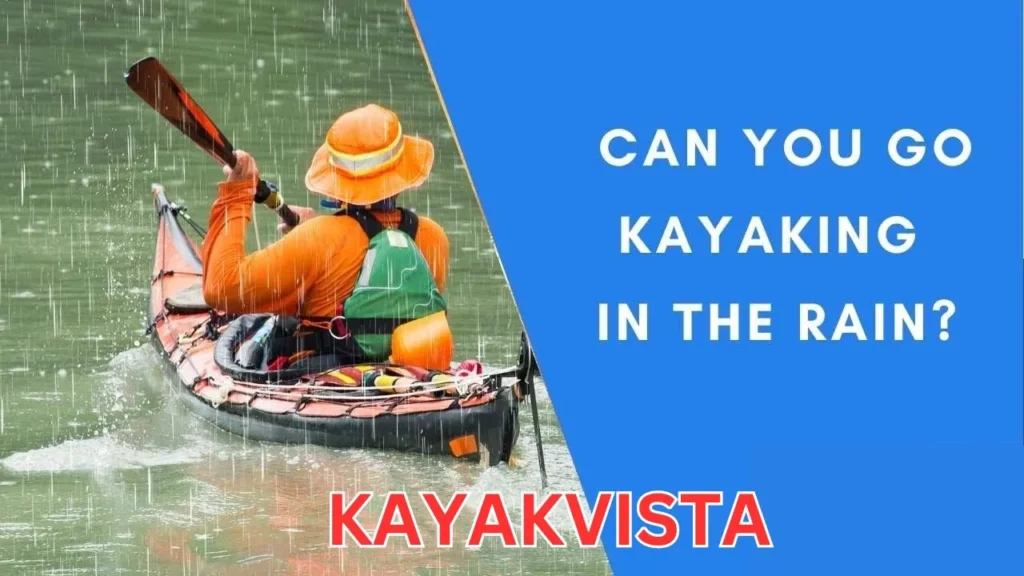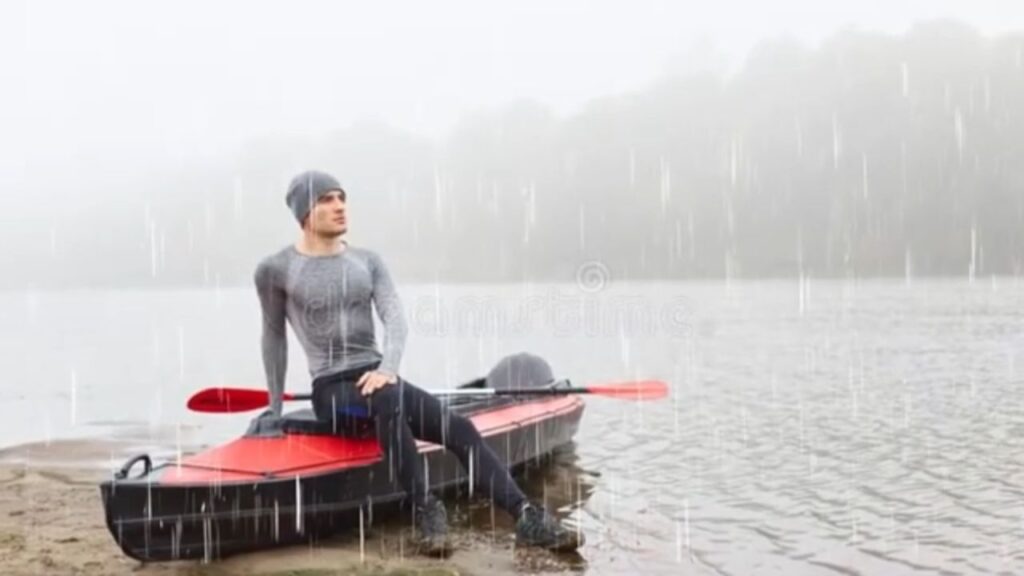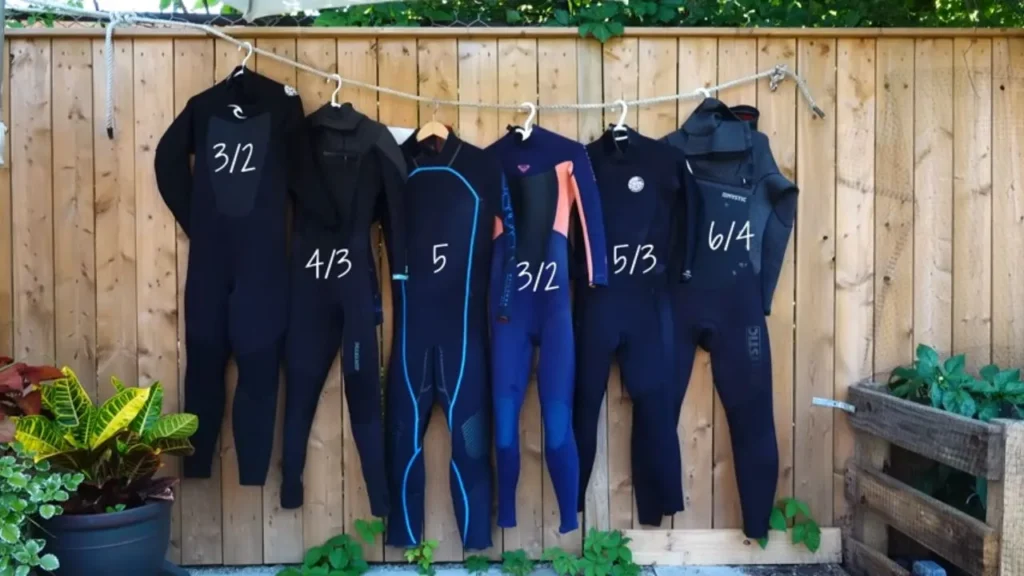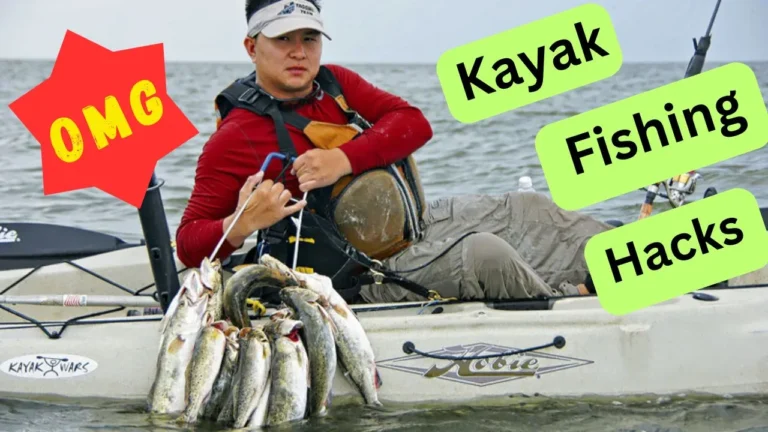Can you Kayaking in the Rain?
Kayaking is a wonderful outdoor activity that can be enjoyed in various weather conditions, including rain. While some people may prefer to stay indoors on a rainy day, others embrace the opportunity to paddle through the gentle showers. However, kayaking in the rain requires proper planning, preparation, and precautions to ensure a safe and enjoyable experience.
In this article, we will explore the essential aspects of kayaking in the rain, from what to wear and what to bring, to how to prepare for potential scenarios. We will also address the most frequently asked questions, equipping you with the knowledge to confidently venture out on the water, even when the skies are grey.
By understanding the nuances of kayaking in the rain, you can transform a potentially unpleasant situation into a memorable adventure, where the pitter-patter of raindrops on the water becomes a soothing soundtrack to your paddling journey.
Key Takeaways
Here are the key points about kayaking in the rain, written simply and concisely:
• Check weather kayaking forecasts and plan routes carefully, avoiding severe conditions.
• Wear rain gear like dry suits, spray skirts, and bright colors to stay dry and visible.
• Layer clothing to maintain warmth in case of accidental immersion.
• Pack essential safety items: bilge pump, headlamp, waterproof phone case, whistle, dry bag.
• Store valuables and extra clothes in a dry bag.
• Know self-rescue techniques and kayak with a buddy for safety.
• Leave a float plan with someone, detailing your route and expected return time.
• Despite challenges, kayaking in the rain can be enjoyable with proper precautions.
• Have fun but prioritize safety throughout your rainy kayaking adventure.
Can You Kayak in the Rain?

Going kayaking in the rain can be an enjoyable experience, but it’s important to consider the specific weather conditions before embarking on your adventure. Not all rainy situations are created equal, and some pose greater risks than others.
First and foremost, evaluate the intensity of the rainfall. Light rain showers may be manageable, but heavy downpours can significantly impact visibility, increase water currents, and make paddling more challenging. Additionally, thunderstorms should be avoided at all costs, as they bring the added dangers of lightning strikes and sudden changes in wind patterns.
Another crucial factor to consider is the water conditions. Even a gentle rain can cause rougher waters, particularly on larger bodies of water like lakes or oceans. Choppy waters and strong currents can make kayaking more strenuous and increase the risk of capsizing.
Proper preparation is key if you decide to proceed with kayaking in the rain. Unlike a sunny day on the water, rainy conditions require extra planning and precautions. You need to be ready for sudden weather changes and have contingency plans in place. Understand that the situation can quickly escalate, and you must be prepared to handle any unforeseen circumstances.
While kayaking in the rain can be a thrilling experience, it’s essential to prioritize safety above all else. Avoid venturing out in severe weather conditions, such as thunderstorms or heavy downpours, as the risks often outweigh the rewards. Remember, the water can be unpredictable, and Mother Nature should always be respected.
Can You Kayak After It Has Rained?

Sure, if it’s rained recently, you can still go kayaking, but you have to be super careful. The water will be higher, and there might be tree branches or other stuff in the water that could mess you up. It’s smart to check out the place first, even if you’re familiar with it. See how the water levels have changed and look out for anything you need to steer clear of
Potential Dangers of Kayaking in the Rain Weather
If you want to go kayaking in the rain, be careful! There are some risks you should know about. Rain can make things dangerous for kayaking
Flash Floods
When it rains a lot, it can cause flash floods. These floods happen suddenly and can be very dangerous. Even a small, slow river can turn into a fast, powerful current. If you’re kayaking and it starts pouring rain, it’s best to get out of the water and end your kayaking trip for the day.
Lightning Strikes
Lightning storms are truly a spectacular display of nature’s power, but it’s crucial to appreciate them from a safe distance, especially when you’re out kayaking. Venturing into the water during a storm is an ill-advised decision that most experienced kayakers avoid at all costs.
However, the unpredictable nature of weather means that sometimes, despite our best efforts, we may find ourselves unexpectedly caught in a storm while on the water. In such situations, the risk of being struck by lightning becomes a significant concern.
While the odds of a lightning strike may seem low, they increase substantially when you’re in an open body of water. Your kayak in rain and paddle, being good conductors of electricity, can potentially attract a strike. Moreover, in the vast expanse of open water, your body may be the tallest object around, making you an even more vulnerable target for lightning.
In these treacherous conditions, it’s crucial to prioritize your safety above all else. Seek immediate shelter on land, if possible, and avoid remaining in the water, where you’re essentially a sitting duck for a potential lightning strike. Remember, the consequences of a direct hit can be catastrophic, and no adventure is worth risking your life.
While kayaking offers an exhilarating way to connect with nature, it’s essential to respect the power of Mother Nature and exercise caution when faced with unpredictable and potentially dangerous weather conditions. By staying vigilant and making informed decisions, you can enjoy the thrill of kayaking while ensuring your safety, even in the face of nature’s most electrifying displays.
Accidents Due to Poor Visibility
When the weather is bad and visibility is low, it’s tough to see where you’re going. You might accidentally hit rocks or other big things or even collide with a bigger boat. None of these situations would turn out well, especially in heavy rain.
5 Kayaking Accidents Captured By GoPros
High Winds and Rough Waters
When it rains a lot, the wind gets stronger and the water becomes rougher. This makes it tough to control your kayak, especially if you’re paddling against the wind. You might get really tired and find it scary to paddle back to shore.
Cold Shock and Hypothermia
Kayaking in super cold water and weather is risky. If you fall in without wearing the right clothes, you’ll get a cold shock. You’ll start breathing fast and might gulp down water too. It’ll be tough to swim or flip your kayak back over. If this happens, you could drown, especially if you’re not wearing a life jacket. So, always dress properly and wear your life jacket to stay safe.
How to Stay Safe While Kayaking in the Rain
Sure, let’s talk about staying safe and enjoying kayaking even when it’s raining or if you get caught in the rain while kayaking.
Check the Weather Forecast
When you’re out kayaking, safety comes first. But how do you prepare for the unexpected? One word: weather.
- Know What’s Coming: Check the weather forecast. It’s like peeking into the future. You’ll find out if it’s going to be sunny, rainy, or windy. Armed with this info, you can plan better.
- Avoid Surprises: Imagine paddling along, and suddenly, a storm hits. Not fun, right? Knowing the weather helps you avoid such surprises. If strong winds or heavy rain are on the horizon, stick close to the shore. Safety first!
- Red Flags: If a serious thunderstorm is brewing, it’s a sign to stay put. Wait for a better day. Your kayak in rain adventure can wait.
Plan Your Route

Sure thing! When you know what the weather and water will be like, plan your route carefully. Stick to easy spots and have a few places where you can hop out of the water fast if things get dicey. If you hear thunder, see heavy rain, or feel things getting rough, it’s time to call it quits. Also, make sure to keep your trip short in bad weather – you don’t want to be out in it for too long.
Dress for the Weather and Water Conditions
When kayaking in the rain, one of the primary concerns is dealing with cold weather and water temperatures. Proper preparation is crucial to prevent a potentially dangerous situation like hypothermia.
One of the key priorities is investing in the right kayak rain gear to keep you warm and dry. It’s always wise to be prepared for the possibility of falling into the water, as an unexpected immersion without proper thermal clothing can lead to a sudden drop in body temperature, resulting in a dangerous condition known as cold shock.
Layering your clothing is essential to maintain warmth, whether you’re seated in your kayak or find yourself taking an unplanned swim. By wearing multiple layers, you’ll be able to regulate your body temperature more effectively, ensuring you stay comfortable and safe throughout your adventure.
When it comes to choosing the right outerwear, you’ll have the option of either a dry suit or a wetsuit. Both options have their advantages and considerations, so it’s important to understand the differences and choose the one that best suits your needs and the anticipated conditions.
A dry suit is designed to keep you completely dry by creating a waterproof barrier between your body and the water. These suits are typically made of breathable materials and are ideal for colder water temperatures, as they provide excellent insulation and warmth.
Wetsuit Vs. Drysuit for Rainy Weather Kayaking

- Wetsuits: These snug, second-skin wonders are like a warm hug for your body. They work by trapping a thin layer of water between your skin and the suit. As your body heats up, this water acts as insulation, keeping you toasty. Wetsuits are perfect for surfers, divers, and anyone who loves a good splash.
- Drysuits: Picture this: a suit that’s like a fortress against water. Drysuits are the superheroes of water gear. They’re 100% waterproof, sealing you off from the wet world outside. Rain? No problem. Waves crashing over you? Piece of cake. Kayakers and paddle boarders adore dry suits because they keep them bone-dry even in the stormiest conditions.
Make Sure You’re Visible
Visibility is a major concern when kayaking in inclement weather like rain. To ensure your safety, it’s crucial to make yourself visible to other vessels on the water. Wear bright-colored clothing or gear, which will help others spot you easily, even in low-visibility conditions. One of the most common types of accidents while kayaking is a collision with other vessels. As a kayaker, you are in a much smaller and more vulnerable vessel, so being visible is key to avoiding potentially serious accidents. Even a minor collision can have severe consequences for a kayaker.
To further enhance your visibility, consider using kayak lights. These lights can be attached to your kayak or your life jacket, making you more noticeable to other boats or watercraft, especially in low-light or foggy conditions. Remember, being visible is crucial for your safety when kayaking in challenging weather. Wear bright colors, and use kayak lights if necessary, to ensure that other vessels on the water can spot you easily and avoid collisions.
Don’t Forget Your Spray Skirt
When raindrops start tap-dancing on your kayak, gear up with a spray skirt. It’s like a waterproof superhero cape for your boat. Here’s why it matters:
- Without a spray skirt, your kayak turns into a mini swimming pool. Not fun. The skirt seals your cockpit, keeping rainwater at bay. No surprise splashes!
- Imagine soggy phones and drowned gadgets. Yikes! A spray skirt saves your gear from a watery fate. It’s like a tech umbrella.
- Picture this: a cozy cocoon for your legs. That’s a sit-in kayak. Rain? No worries. Your lower half stays warm and dry. Plus, stash your stuff safely inside—no rain-soaked surprises.
Master Self-Rescue
Alright, if you’re new to kayaking, here’s the scoop on rough weather. First off, you need some skills. It’s not just about paddling; you’ve gotta learn to read the water and understand the weather, kinda like mastering a secret language. And trust me, you’ll encounter some tricky conditions out there, so be patient and get the hang of it.
Next up, self-rescue savvy is key. Picture this: you tip over (it happens to the best of us!). Can you rescue yourself? That’s the big question. Practice flipping your kayak back upright and hopping back in like a pro. It’s like performing a graceful water ballet move, but super important.
Follow the Usual Safety Precautions
When you’re heading out for a rainy kayaking adventure, remember the basic safety rules. First things first, make sure you’ve got your safety gear. Put on your life jacket properly before you start paddling. It should be approved by the US Coast Guard and fit you well.
Here’s another important tip: don’t take on more than you can handle. If the weather or water conditions start getting too tough, it’s okay to call it quits. Don’t wait until things get dangerous – end your kayaking trip if you need to.
Leave a Float Plan
Keep your buddy in the loop about your kayaking plans and when you expect to return. If you’re not back on time, they’ll know something’s up. Stick to your original plan and let someone know if you change it. Safety is key – no disappearing acts or spontaneous adventures off-script.
It’s Best to Go with a Friend
When you go kayaking, it’s safer to have a friend with you. If something goes wrong, your buddy can lend a hand. Kayaking alone is okay too, but when the weather gets rough, it’s best to stick together.
Some Key Items to Bring When Kayaking in Rainy Weather
When you’re kayaking in the rain, it’s crucial to be extra cautious. Here are some essential items you should have with you:
Bilge Pump
A bilge pump is like a superhero for your kayak. You’re out kayaking, and suddenly water sneaks into your boat during a rainstorm. Not cool, right? But fear not! The bilge pump comes to the rescue. It’s like a mini water vacuum that sucks up the unwanted wetness from your kayak’s cockpit.
Waterproof GPS
In rainy weather, the risk of getting lost is higher compared to nicer conditions. Plus, using your phone becomes tricky when it’s wet.
Good Dry Bag
When kayaking in the rain, it’s essential to have a safe and dry storage solution for your valuables and an extra set of dry clothes. A high-quality dry bag can be a lifesaver in these situations, ensuring that your belongings remain completely dry, even in the event of a capsize.
Some key points about using a dry bag for rainy kayaking adventures:
– Dry bags are waterproof and designed to keep contents dry, even when fully submerged.
– Store valuables like phones, wallets, keys, and electronics in the dry bag.
– Pack an extra set of dry clothes in the dry bag, in case you get wet.
– Roll and seal the dry bag properly to prevent water intrusion.
– Consider a larger dry bag to accommodate all your essentials.
– Attach the dry bag securely to your kayak or wear it as a waterproof backpack.
– In case of a capsize, the dry bag will float and keep your belongings safe and dry.
Having a reliable dry bag can provide peace of mind and allow you to fully enjoy your rainy kayaking experience without worrying about your valuables or needing a change of dry clothes.
Headlamp
When kayaking in the rain, a headlamp can be handy for two reasons. Firstly, it helps make you more visible in low-visibility conditions. Secondly, if you end up kayaking in the dark, it provides you with a source of light.





